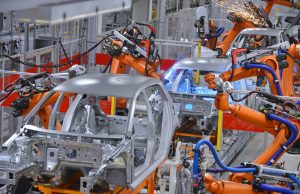

What You Should Know About China’s 14th Five-Year Plan
China’s 14th Five-Year Plan: In March, the “Two Sessions” or “lianghui” took place, an annual political meeting where thousands of delegates to NPC (National People’s Congress), CPCC (Chinese People’s Political Consultative Conference), government legislature, and other high-caliber political advisory convened in a week. They set the 14th five-year plan to impact the nation’s political and economy for half a decade.
From the business perspective, these Two Sessions are critical for global entrepreneurs as they will see China’s blueprint for the next five years and beyond, which will help them strategize on business operations from the ground up — online and offline. The policies will affect domestic and international trade and the economy. So, what is that for you? Below are the highlights of China’s 14th Five-Year Plan from 2021 to 2025.
Prioritize the Quality of Growth than Quantity of Growth
The government plans to keep an appropriate range on its annual economic growth for the next five years. Premier Li Keqiang set China’s GDP growth target at more than 6% this year, below analysts’ and economists’ expectations. Bloomberg’s survey showed that economists’ average annual forecast for the Chinese economy is at 8.4%.
For the 14th Five-Year plan, the “Dual Circulation Strategy” (DCS) will be the core of China’s economic growth model in the next few years. In this strategy, the integration of domestic and global markets helps in boosting growth. China remains to get involved in the worldwide economy.

Become Self-Reliant in Technology and Manufacturing Powerhouse
China aims to be a leader in innovation by 2035. The next five years will focus on innovation and make it the center of the nation’s modernization and achieve breakthroughs in core technologies. These technologies include artificial intelligence, cloud computing, semiconductors, to name a few. One of its targets is to get 56% of the nation in using 5G networks.
China will also increase its research and development spending by 7% annually for the next five years. Moreover, the government plans to transform the nation into an advanced manufacturing superpower to increase China’s global competitiveness in robotics, agricultural machinery, new energy vehicles, aircraft development, to name a few.
Push the Development of New Energy Sources
China is serious about being a catalyst for change in the environment to decarbonize its economy. Part of the nation’s action plan is to reduce energy intensity and develop new energy resources. Renewable energy is also the country’s focus and will continue to promote clean and efficient coal use.
In the five-year plan, China aims to target little progress for the short-term in using low-carbon technologies. Last year, China opted for alternative technologies such as offshore wind. The Global Wind Energy Council has recognized the country as the global leader in new offshore wind capacity.

Alleviate Poverty Through Revitalizing Rural Areas and New Urbanization
The Chinese government wants to achieve “common prosperity,” and last month, they disclosed that 100 million people were out of poverty since 2012. Currently, the government is recalibrating its strategy to prevent people from falling back into poverty. With the National Administration for Rural Revitalization heading the efforts, the plan is to fight the battle against poverty constantly.
As of this time of writing, 550 million people live in rural areas. The success of rural revitalization and new urban strategies will also affect the income, lifestyle, and spending of the middle class, impacting the consumer economy.
China also aims to increase the urbanization rate of the population by 65% by 2025. That means, as more people from rural areas migrate to urban places, they will increase their investment in infrastructure. Thus it will also fuel consumption.
Greater Liberty on the International Business Community
China commits to push forward in providing greater liberty in accessing the market to foreign companies. The government plans to widen the market access in specific sectors by cutting the negative list restricting foreign investments. In addition, China encourages foreign companies to invests in new and high technologies, advanced manufacturing, energy conservation, to name a few.
The supportive policies are around energy use, environmental assessments, industrial planning, and land use. These four sectors had foreign-funded investment projects. However, international companies should also be aware that the National Development and Reform Commission (NDRC) that heads state planning and implementation of national economic and social development, and coordination of primary financial operations, will also focus on national security reviews of foreign investments. That means foreign investors should expect an increase in national security reviews of their business activities in China. As always, China always conducts security reviews on foreign investment, which may affect national security.
China’s 14th Five-Year Plan: Final Thoughts
With the five-year plan, China is taking the planning seriously, and everything else is all about action. If you’re a global entrepreneur with existing business operations in China, you can’t overlook these plans as they will also affect how you do business with domestic suppliers and partners. Overall, China will remain active globally and ensure more liberty on access to the Chinese market, but be aware of the policies that may affect other sectors.
Are you thinking of starting your business? Let us know how the Limpid team can help you with your business documents, Chinese translation services, and localization projects.
 +1-877-574-2407 (US and Canada Toll Free)
+1-877-574-2407 (US and Canada Toll Free)  service@limpid-translations.com
service@limpid-translations.com



